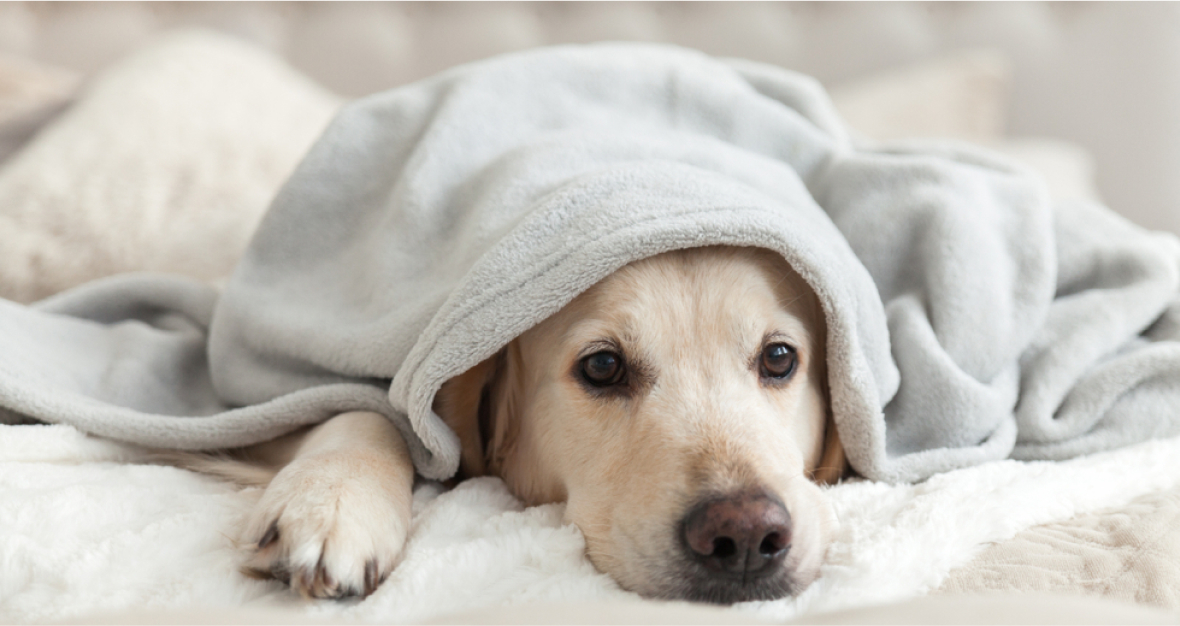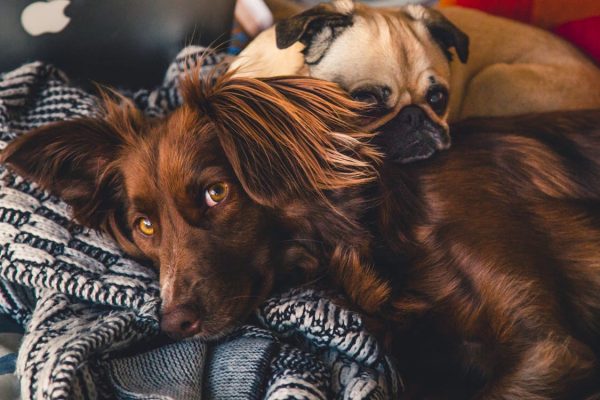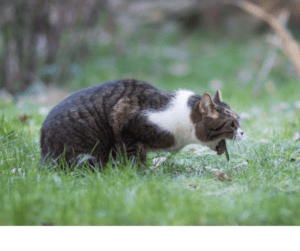Home » Pet Health » Pet Parvo » Prevention
Prevention

Canine Parvovirus or Parvo is a viral disease in dogs that can survive in the environment, even in places with severe weather conditions. It can live in freezing temperatures and shaded areas. Moreover, Parvo is also immune to various household cleaners.
The best treatment for Parvo is prevention. By preventing the infection of Parvo, you can save your dog and other dogs from being infected by it.
Keep your dog healthy and Parvo-free with these prevention tips. The following tips include getting vaccinations and taking necessary precautions. In this way, you can ensure that your home is entirely Parvo-free!
Vaccinations

The first best way to prevent your dog from catching Parvo is through getting vaccinations. Usually, veterinarians recommend giving vaccinations to puppies at 6-8 weeks old. After that, these puppies will receive their shots of boosters every 3-week intervals until they reach their 16th week of age. Once they reach one year old, they will receive boosters once again.
Adult dogs, which did not get the Parvo vaccine even once, will receive two vaccinations. There will also be a 3-week interval between their first and second shots.
After these vaccinations, previously vaccinated dogs will continuously receive boosters once a year. The white blood cells of a vaccinated dog produce antibodies to the disease and significantly decrease its risk of becoming infected. After a dog is vaccinated, a veterinarian can draw its blood to measure the level of Parvo antibodies to determine if it has worked or not (Petwave).
Supplements
In addition to vaccines, a proper prevention method is using probiotics to promote good bacteria in the gut. Probiotics aid digestion and fight off bacteria and viruses that can cause illness. These probiotics are also full of vitamins and nutrients.
Moreover, probiotics also have further health benefits, including preventing urinary tract infections, decreasing allergies, and reducing inflammation. Veterinarians typically recommend probiotics for dogs with frequent diarrhea and stomach trouble.
Here are a few of our top picks for natural, at-home supplements. Be sure to read the ingredients of each product, as some have warnings not to use in combination with other herbal supplements.
Isolation
It will be better not to take an unvaccinated dog to dog parks, pet stores, or other places where many dogs are present and confined in one area. If a dog with Parvo has ever defecated in one of these areas, the virus can remain in the environment for months or even years if it has not been cleaned and sanitized thoroughly.
Soil can harbor the virus, and the disease can be carried away from the initial site on shoes and carried to other areas in the vicinity. In this way, other dogs may have an infection with Parvo.
However, this does not entirely mean that you should confine your dog in your house. It can still go out but ensure not to be in contact with other dogs. It will be better to receive first and second shots of vaccinations first before going to crowded places.
Environmental Factors
Unfortunately, the environment does not contribute much to killing Parvo. The virus can survive in freezing temperatures outside, and if a dog excretes waste containing Parvo in the snow, you must wait for the snow to melt before it is safe for dogs again. Areas covered by the shade can remain contaminated for up to 7 months, and we can only clear up places under direct sunlight after five months.
We cannot entirely disinfect the dirt and grass, but a bleach and water mixture can significantly help. Sunlight has some drying effect, but it will not completely kill the disease (Nandi and Kumar, 2010).

Cleaning After An Infected Dog
Disinfecting and cleaning your home or animal shelter are essential, especially when your dog currently has or is recovering from Parvovirus. This process helps to get rid of the infection and prevent other dogs from catching the virus.
It is important to note that cleaning and disinfecting are not the same thing. Cleaning does not kill pathogens but can remove or reduce the number of them in an area. Disinfection is the step after cleaning and kills the pathogens that usual cleaning cannot remove.
Ensure that all animal shelter staff, volunteers, or those in your own home can entirely understand the importance of cleaning and disinfecting. Not all products are parvocidal, so make sure to use an effective cleaning agent to kill the virus.
Prepare a solution of 1-part bleach to 32 parts of water to make an animal-safe yet effective solution that you can use in cleaning and disinfecting the areas. You must wash spaces with water before bleach, as organic matter such as dirt, grass, feces, and the likes can inactivate the bleach.
Fabrics

Wash all fabrics your dog has touched with bleach, including blankets, rugs, bedding, towels, etc. Unfortunately, if you have colored laundry, which you cannot bleach, you need to throw them out to prevent contamination. Keep dirty and clean laundry separated with no contact between the two piles.
Flooring

Before cleaning non-porous or hard-wood flooring, test a small, less visible area first so that you know what to expect after the treatment. Disinfect the floors with the bleach and water mixture, and clean the floor several times to ensure that you have successfully killed all viruses.
Hard Surfaces

Use the same diluted bleach and water mixture or a pre-mixed solution to wipe down counters, kitchen and bathroom cabinets, and other non-porous household items.
Outdoors

Remove all feces from your yard and dispose of the bags. Spray each area where the deposited stools are with the diluted bleach and water mixture. Unfortunately, the bleach solution will kill any plants or grass that comes into contact with it. However, bleach is the only disinfectant that can guarantee that the virus will disappear.
Pets and Bleach

It is important to note that bleach can be poisonous to some dogs and cats, so it will be better not to use ultra-concentrated bleach. Considering that, you can use household bleach instead. Household bleach is more of an irritant and not a corrosive agent.
Household bleach has a pH level of around 11, while ultra-concentrated is generally closer to 12 or 12.5. Professional cleaners mostly use these ultra-concentrated bleaches. Most bleach poisoning cases in pets happen from a spill that pet owners do not know. The dog or cat will most likely walk into the spilled bleach and lick its paws, therefore ingesting the bleach.

With that, it is essential to make sure you watch for spills and do not walk away from the bucket of bleach. While you are cleaning, keep your pet isolated in another room until the bleach has dried.
It can be helpful to retrace your dog’s steps to determine where the initial exposure took place and if your dog has contaminated other areas. Keep in mind that recovered animals can continue to excrete Parvo in their waste for several weeks. Keep disinfecting areas with bleach where your dog has gone to protect other animals from contracting the disease.
In addition to cleaning up after your pet, it is also crucial to clean and disinfect areas that you have touched. You can unconsciously transfer the virus to various places through your hands and shoes. We suggest that you should use the products KennelSol Bleach, ProVetLogic Pet Spray, or Rescue One-Step for disinfecting and sanitizing hard surfaces.
Top 5 Frequently Asked Questions
The typical vaccine combination is Distemper, Hepatitis, Leptospira, Parainfluenza, and Parvovirus (DHLPP). Veterinarians will give the first shot to 6-week old puppies and will administer it in 3-week intervals. Usually, there are three shots in total, and then a booster shot is administered after they reach their first year of age. After that, these dogs will continuously receive boosters once every year.
The best disinfectant known to kill Parvovirus is chlorine bleach. Add 1/2 cup bleach to 1 gallon of water to make the solution to kill Parvo in your yard. Apply the solution using a spray bottle to the surface, including grass, dirt, and concrete. Ensure that you kill the disease everywhere.
You can contract Parvovirus at any time of the year. However, it is more common to be present in the Spring. After the snow melts and the cold temperatures warm up, more dogs are out for walks and are playing at the dog park. In that case, there are more opportunities for the disease to spread. While Parvo can survive cold temperatures, it thrives in temperate climates.
You cannot spread Canine Parvovirus to humans. There are various variants of Parvovirus, and each of them can infect a specific species. In humans, there is Parvovirus B19 that they can get from other humans. This virus has a different set of symptoms and treatments.
YES! Getting vaccinated with Parvo vaccines is the best way to prevent Parvovirus. It would be best if you take your dog to veterinarians to receive Parvo shots. In that way, your dog can be safe from catching the disease.
Other Frequently Asked Questions
It is essential to follow the diet and medication regimen that your veterinarian has recommended after your dog comes home from the animal hospital. Let your dog rest and feel warm. Continue monitoring its condition during the recovery. For more information, check out our Treatment page.
Usually, Parvovirus can survive in places for a long time, depending on the factors such as sunlight, temperature, and humidity levels. For example, Parvo can live in clothing and carpet for six months. On the other hand, it can live in concrete or soil for nine months to one year.
Once your dog has received a complete vaccination series, it will receive a booster shot in its first year. After that, it will continuously get booster shots once a year.
After receiving a full round of Parvo shots, it will usually take 3-5 days before your dog starts to gain immunity from Parvo. However, if your dog has not received vaccinations yet, it will be best to isolate it from other dogs.
It is best not to use Lysol because it is NOT effective in killing Parvovirus. Instead, you can use bleach in cleaning and disinfecting your home or animal shelter if your dog caught the virus.
Blogs

How To Identify Normal Cat Poop From Worrisome Ones?
Your cat’s poop can tell you many things about its health. Its color, shape, consistency, size, content, and odor can

Hairballs in Cats: What Are They & What Are The Signs?
Hairballs are common in cats. This condition, known as trichobezoar, occurs when hair becomes stuck in the cat’s throat, digestive

Colitis in Cats: What You Should Know
Colitis is one of the many gastrointestinal disorders that affect cats. It is a condition in which the intestine becomes
